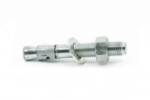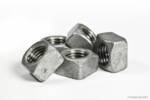Newest FAQs
Yes! Portland Bolt ships to Canada on a regular basis. Our strengths of product expertise, on-time shipping and familiarity with customs documentation make us an excellent option for Canadian companies. Please visit our Interactive Destination Map to see a map of the locations in Canada to which we have shipped recently. Our knowledgeable shipping department will... Read more

No. The ASTM F1554 specification clearly addresses the type of bolts that are covered under this specification, and which types of fasteners are not. ASTM F1554 Section 1.1 states that F1554 covers “…straight and bent, headed and headless, carbon boron, alloy or high strength low-alloy steel anchor bolt (also known as anchor rods).” Additionally, in... Read more

Square plates, rectangular plates, round plates, and templates are often required as part of an anchor bolt or fastener assembly. These plates serve as either large, oversized washers or anchor plates which are fastened to the bottom of anchor rods to provide pull-out resistance. Plates and washers are typically manufactured to ASTM A36, A572 grade 50,... Read more

ASTM F1554 does not specify whether the headed configuration is to be a standard hex pattern or heavy hex. There are three primary configurations covered by the ASTM F1554 specification which include straight rods, bent anchor bolts, and forged headed anchor bolts. Whether or not a headed anchor has a standard hex head or a heavy hex head can differ depending on the application. Since the... Read more
No, ASTM does not require a rotational capacity test for A490 structural bolts. The reason for this is that the purpose of the rotational capacity test per ASTM is to evaluate the presence and efficiency of the lubricant used in a bolt and nut combination. Lubrication is used with galvanized bolts since there is additional... Read more
There are no documented torque values for lag bolts or screws. The reason for this lies in the definition of torque when discussing threaded fasteners. To put it simply, torque is a measure of the twisting force required to spin a nut up along the threads of a bolt. Lag screw threads are driven into wood, and therefore,... Read more
Tie rod assemblies can be very complicated and confusing to someone who does not deal with them on a routine basis. If you are not experienced in dealing with tie rod assemblies, you may not understand all of the necessary information that is required to ensure that you receive the proper components for the tie... Read more
Yes, in some cases the stacking of F436 washers seems to be allowed, but not in all cases. The Research Council on Structural Connections (RCSC) in Specification for Structural Joints Using High-Strength Bolts, December 31, 2009, page 16.2-12 says, “If necessary, the next increment of bolt length can be specified with ASTM F436 washers in... Read more
Hot-dip galvanized nuts cannot be used on a plain finish bolt. Hot-dip galvanizing adds between 2 – 6 mils (.002” – .006”) of zinc to the threads of the bolt and due to this increased thread thickness, hot-dip galvanized nuts are tapped oversize to accommodate and create a workable fit. These oversized internal threads on... Read more

This is a question that we are asked on a regular basis, and one that we do not have a clear answer for due to the variety of factors involved in making this calculation. Anchor bolt pull out strength is the force required to pull a single bolt out of its foundation. In order to... Read more
